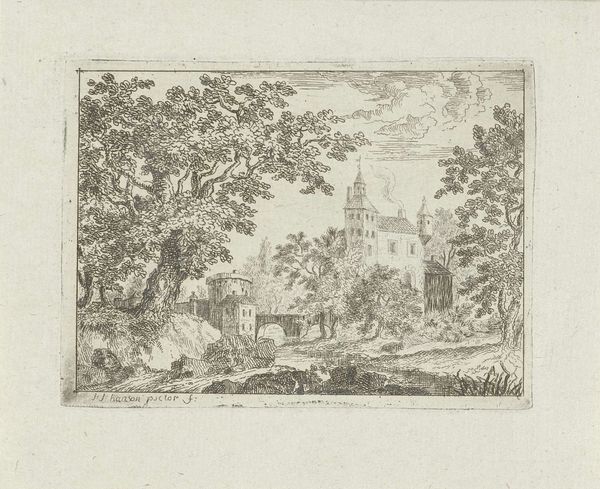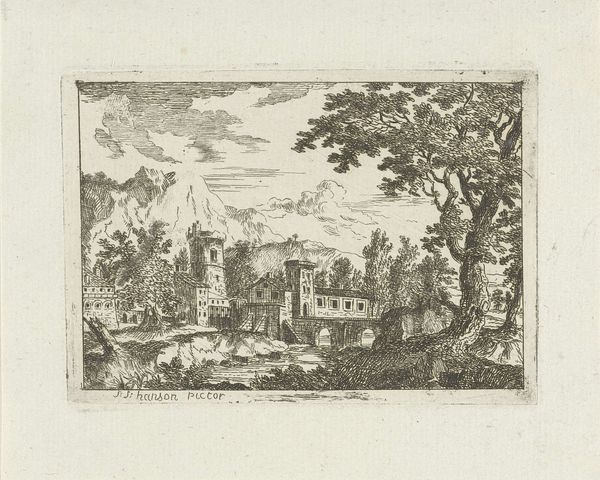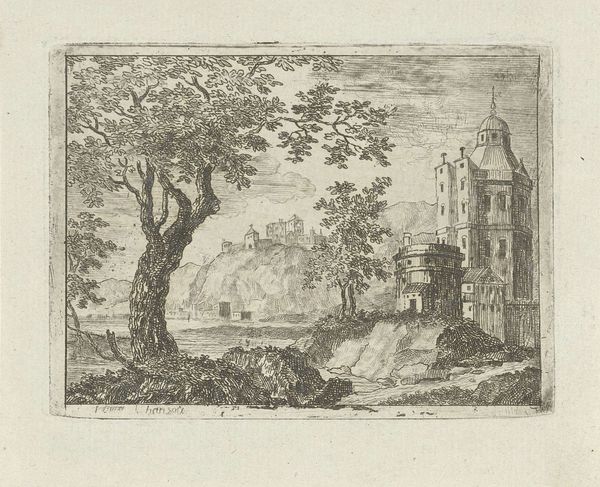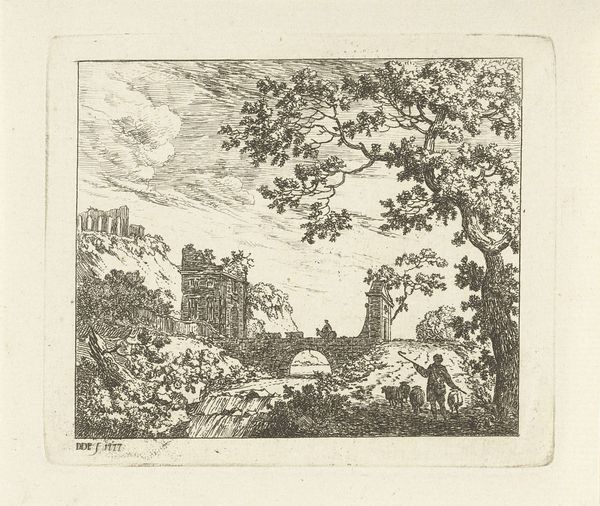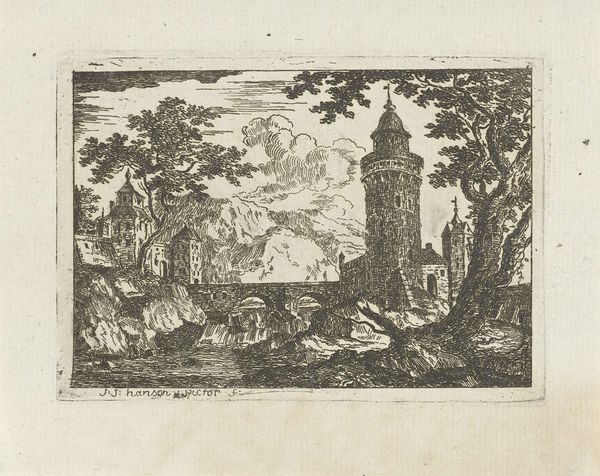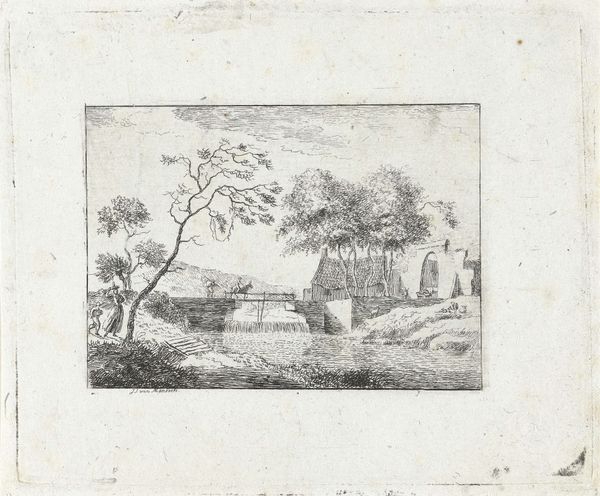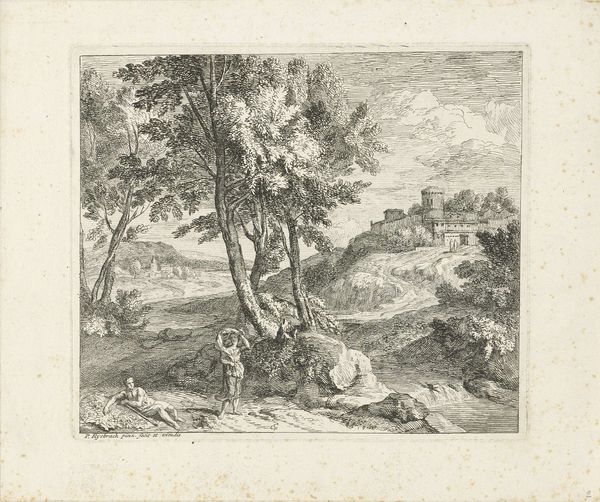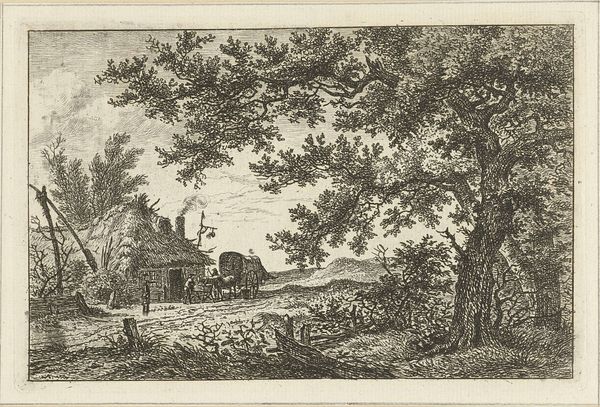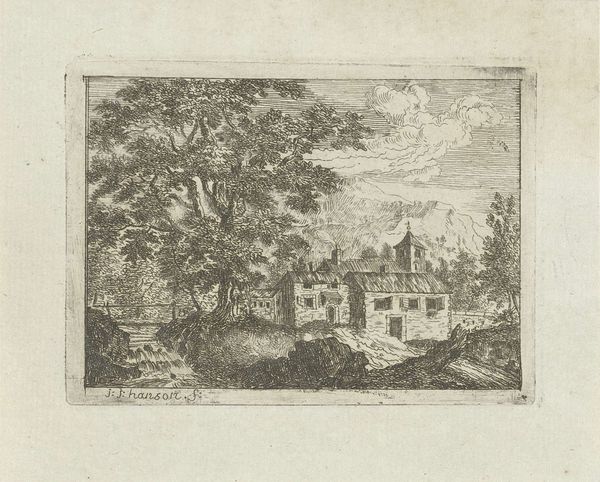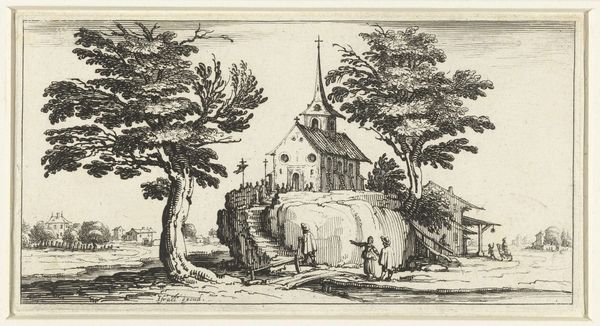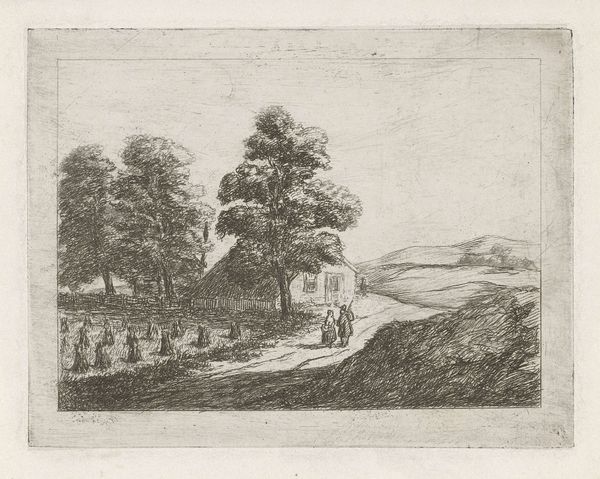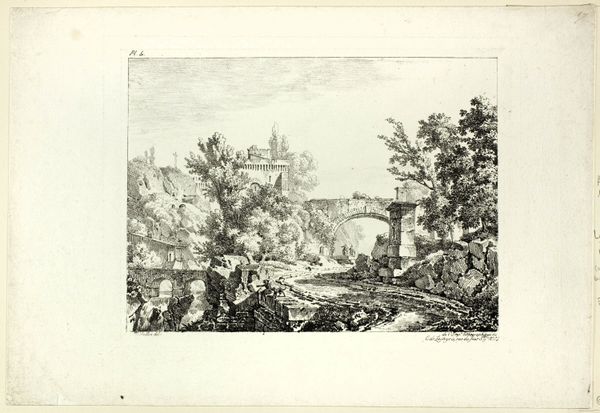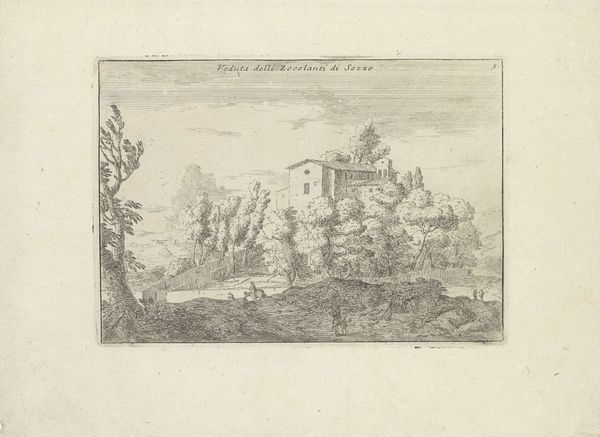
Dimensions: height 72 mm, width 102 mm
Copyright: Rijks Museum: Open Domain
This print, "Kasteel in een landschap" or "Castle in a Landscape," was made by Jean Joseph Hanson in the late 1700s using etching. Etching involves drawing with a sharp needle through a waxy ground on a metal plate, which is then submerged in acid. The acid bites away at the exposed lines, leaving an image that can then be inked and printed. The fine, precise lines we see here are characteristic of this process. Hanson has skillfully used the etching technique to depict light and shadow, creating depth and texture in the trees, the castle walls, and the distant hills. This attention to detail transforms the image into more than just a picturesque scene; it is a testimony to the artist’s mastery and the labor-intensive process of printmaking. Thinking about the material qualities and production of prints like this helps us appreciate them not just as images, but as objects imbued with cultural meaning. This challenges the traditional hierarchy that often places painting and sculpture above so-called 'minor' arts like printmaking.
Comments
No comments
Be the first to comment and join the conversation on the ultimate creative platform.
